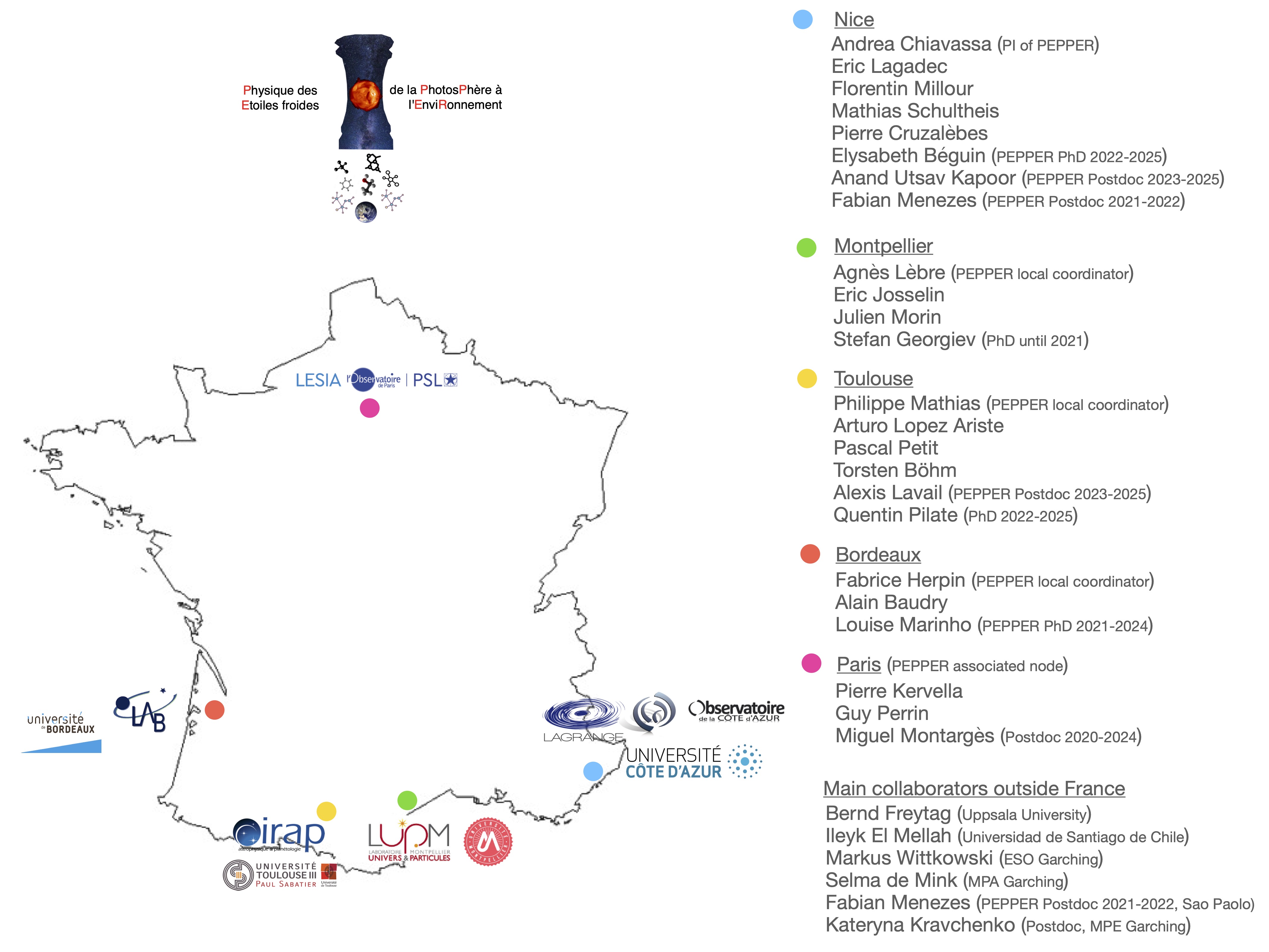
The Nice node. The Lagrange laboratory is a joint research unit of the Observatoire de la Côte d'Azur, CNRS and the University of Côte d’Azur. It is a multidisciplinary laboratory that brings together teams in astrophysics (planetology, stellar and solar physics, galaxies and cosmology), fluid mechanics, signal and image processing, and instrumentation for high spatial resolution and high dynamic range astronomical observation. The laboratory is leading the european consortium who developed MATISSE. Moreover, it is also involved in several space missions (Gaia, EUCLID, Osiris-Rex, and Hayabusa 2. The Stellar and Solar team’s main research themes aim at advance the knowledge of the internal structure, atmosphere and environment of stars through heavy numerical simulations (carried out at the computing mesocenter), and research and developments of new and current instrumentation, with a particular accent on interferometry.
The Montpellier node. The Laboratory of Universe and Particules in Montpellier (LUPM) is part of the Observatoire des Sciences de l’Univers, OREME, at the University of Montpellier. The LUPM hosts three scientific teams, working on various astrophysical topics from X rays and astroparticles to theoretical cosmology. The Stellar Astrophysics team is contributing to several ESA space missions (Gaia, PLATO), and is responsible of the POLLUX database (a stellar spectra database of theoretical data). The LUPM Stellar Astrophysics group works on topics such as stellar interiors, evolution, atmospheres, magnetism, environment, with a combined approach of observations and modelling. The members have a large experience in high resolution spectroscopy (observational and synthetic spectra), in spectropolarimetry and stellar magnetism, in physics of static and dynamic stellar atmospheres (radiative transfer, stellar synthesis).
The Toulouse node. The Institut de Recherche en Astrophysique et Planétologie (IRAP) is one of the six laboratories of the Observatoire Midi-Pyrénées, a component of the Toulouse University. The IRAP laboratory has a large thematic diversity, and among them there is the team PS2E (Physique du Soleil, des Etoiles et des Exoplanetes). It is involved in different kinds of fundamental physical processes, such as asterosismology (CoRoT, Kepler and PLATO missions) or angular momentum transport (multidimensional stellar evolution modelisation). Moreover, the team has developed an unique international expertise in spectropolarimetric instrumentation (ESPaDOnS, Narval and Neo-Narval, SPIRou, SPIP) and leader techniques to extract the maximum information of these data (e.g. reduction pipelines of the associated instrumentation, Least Square Deconvolution, Zeeman Doppler Imaging).
The Bordeaux node. The Laboratory of Astrophysics of Bordeaux (LAB) is a joint research unit of CNRS and University of Bordeaux. It is part of l’Observatoire Aquitaine des Sciences de l’Univers (OASU). The LAB plays an important role at the instrumental level in past, current, and future technological projects (e.g. ALMA, SKA, HERSCHEL, Mars2020, JUICE, SPICA).





